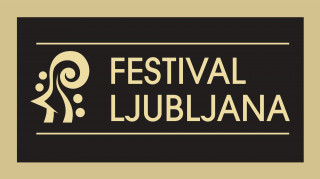Important information
Exhibiton of works by Mira Ličen Krmpotić
MY ISTRIA: COLOURFUL VISIONS IN A GESTURAL STYLE
She draws her creative inspiration from the living environment to which she has belonged, heart and soul, since birth: Istria. With its sea, which she admires from every perspective in its colourful mixing and mingling of light, shadow and shades of colour, and its hilly hinterland of interwoven shapes and compositions that reveal the incomparable natural riches of past and present. Tied to its soil and its people. To a cultural heritage created by generations of people with different roots and affiliations. Mira Ličen Krmpotić. Painter. Artist. Restorer and conservator. Designer. Organiser. An Istrian with her gaze fixed on the world but with her heart at home. In her Istria. Hence this exhibition, entitled My Istria. Featuring works that reflect deep feeling in such a way that we can also copy them into our world – a world which, to paraphrase the influential French philosopher Maurice Merleau-Ponty, is predominantly and essentially visual and could not be made either with smells or with sounds but can be filled with the beauties created by the hands and the eyes, since the world “is not what I think, but what I live. I am open to the world, I communicate indubitably with it, but I do not possess it; it is inexhaustible.”
In this inexhaustible world, her hands and eyes have created a broad range of concrete motifs, running from her early youthful phase in the mid-1970s to her present mature period, which she has connected into numerous cycles of portraits and female nudes, Istrian cattle of the native Boškarin breed, landscapes, marinas and harbours, yachts and regattas, tugboats in the port of Koper, scenes from Piran and Koper, views and landscapes she has visited, but above all views and landscapes of Slovenian Istria. She has also created an extensive oeuvre of religious works, drawing on both Old Testament and New Testament themes, including the cycles The Fall, Meditations, Genesis, St Francis of Assisi’s Canticle of the Sun, numerous versions of The Way of the Cross, and many others. All in a variety of techniques and formats, including oil and acrylic on canvas, tempera on paper, stained glass, mosaic, fresco-secco, clay, glass and even textiles. Her designs for ceramic sacred vessels and paintings of vestments, particularly chasubles, represent the pinnacle of this type of design in Slovenia.
From this broad range of themes it is possible to condense her artistic exploration into two categories that define her in her totality and reveal her as an original and distinctive artist: landscape painting and religious art. For decades her creative ideas have occupied the margin of the abstract and the figurative, where with masterly skill she abandons herself to internal impulses and allows her hand, in a spontaneous gesture, to transfer thought, vision, colour and composition to the surface she is working on; where her deep knowledge of techniques and methods opens up numerous possibilities and pathways that awaken her inner energy and stimulate an experience of spirituality like light, love and inner happiness. Like a symphony with a broad spectrum of colourful experience, in places dramatically felt, contemplatively deepened or even lyrically relived. Her suggestive use of colour is based on her perception of her environment in all its cultural and spiritual richness. Colour and an intuitively guided creative process are two of her attributes, formed in the long process of growth, maturation, the acquisition of knowledge and experience, from her beginnings in a distinctive expressionism, through her later allusive works, to gestural painting and an approach to her figurative starting point.
Colour and the record left by the hand. The radiation of the visible. Every stroke of the brush expresses her alone, incorporates some of those elements that define modernist painting, and contains “the air, the light, the object, the composition, the character, the outline and the style,” to use Merleau-Ponty’s eloquent definition. The Istrian landscape is an inspiration that encompasses a broad range of feelings, emotions and associations, but the painter seeks the essence; she seeks herself, her values, her existence; she seeks the way to express what she has seen and experienced. The beauty she carries in herself; the landscape perceived by her noble eyes. The landscape “in its totality and in its absolute fullness”, when “each brushstroke must satisfy an infinite number of conditions”, when “a colour is never only a colour, but the colour of a specific object”, for the world is “a mass without gaps, a system of colours” and “that which we see”, but also “that which we must learn to look at”: her world, deeply expressive and sensitive, seen and experienced in the sumptuous blend of colours – offered by nature and her palette – caught in a subtle veil of light and lighting that is “merely a moment in a complex structure”, the structure which the painter captures on the canvas.
She builds with colour. She communicates with colour. She uses colour to capture a moment that she wishes to record permanently. Colour is the carrier of her message. Particularly in her landscapes, it glows and comes alive in infinite feeling: her palette is rich and explores combinations of cool and warm shades, including coldly cool and only warm shades, that stimulate effects of lighting and colour in compositions that emphasise her aesthetic charge but at the same time her power of communication. Like an echo of the environment in which she lives. Like an expression of her subtle soul. Like the fruit of her long years of creative explorations. And her belonging to the space. To the landscape to which she is tied. Which is always there. As Merleau-Ponty puts it, “When I see the horizon, it does not make me think of that other landscape which I should see if I were standing on it, nor does that other landscape make me think of a third one, and so on; I do not visualise anything; all these landscapes are already there in the harmonious sequence and infinite unfolding of their perspectives.” Including her most recent cycle of Istrian landscapes, where her olive trees come to life.
Nelida Nemec


